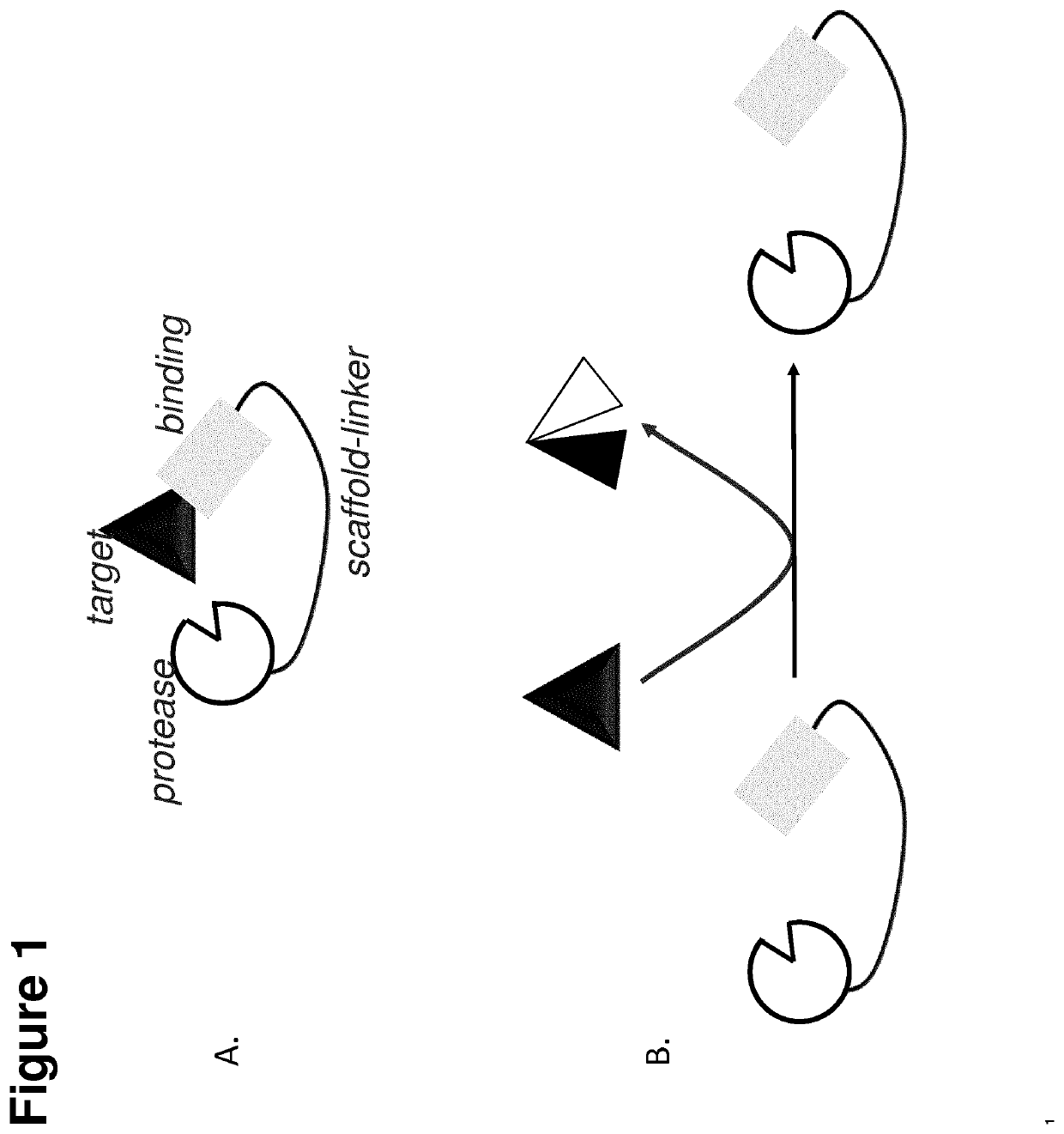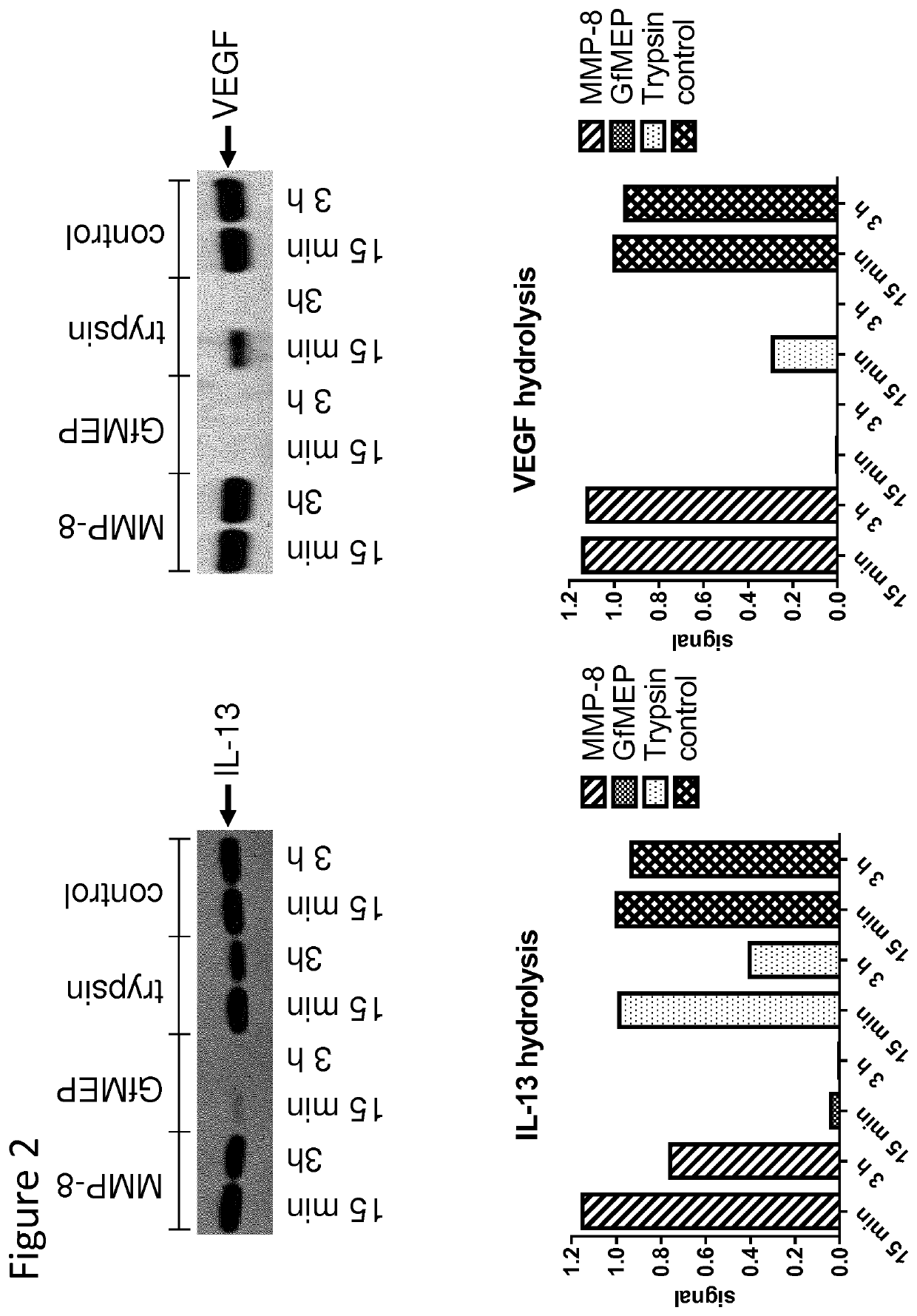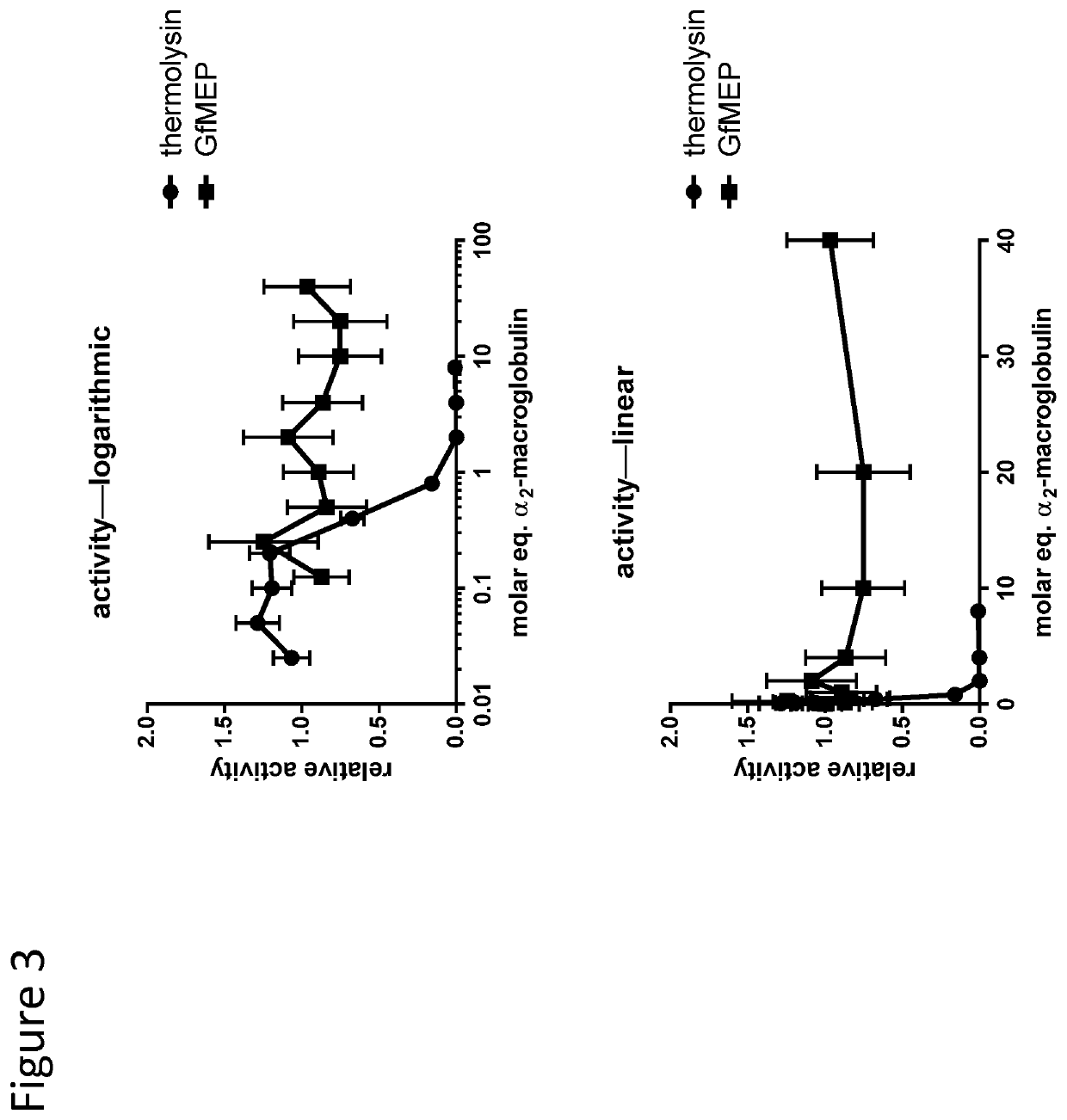Conjugated protease targeting moieties
- Summary
- Abstract
- Description
- Claims
- Application Information
AI Technical Summary
Benefits of technology
Problems solved by technology
Method used
Image
Examples
example 1
acroglobulin Assay
[0086]Alpha-2-macrglobulin was diluted from 4 μM to 0 μM in assay buffer (PBS containing 1mM CaCl2 and 100 μM ZnCl2). Separately, solutions of proteases were prepared at 500 nM (thermolysin) and 100 nM (GfMEP) were prepared in assay buffer. The protease dilutions and macroglobulin dilutions were then mixed at 1:1 ratios, and incubated at 37° C. for 30 min.
[0087]A macromolecular YFP-CFP labelled FRET substrate was prepared at approximately 2 μM in assay buffer. Ten microliters of this solution was aliquoted to wells of a 384 well black bottom fluorescent plate.
[0088]Following the 30 min 37° C. incubation, 10 μL of protease:macroglobulin samples were added to substrate containing wells of the 96 well black bottom fluorescent plate. The plates were immediately transferred to an Envision fluorescent plate reader and assayed for fluorescence six times at 3 min intervals with excitation wavelength set to λexc=414 nm emission wavelengths read at λem=475 nm and λem=527 nm....
example 2
s Assay
[0091]To qualitatively assess the relative efficiency of GfMEP catalysed hydrolysis of the therapeutic targets (e.g. IL-13) relative to MMP-8 and trypsin, a hydrolysis assay was performed. 2.5 μM of substrate target (e.g. IL-13) was incubated with 125 nM MMP-8, GfMEP, trypsin or blank in assay buffer (PBS, 1 mM CaCl2, 100 μM ZnCl2) at 37° C. At 15 min and 3 h, aliquots of the incubations were removed and quenched with NuPage SDS-loading buffer containing 50 mM EDTA. Samples were subjected to SDS-PAGE, followed by coomassie staining. Gels were destained, followed by imaging and quantification using a LiCor Odyssey imaging system, as shown in FIG. 2.
example 3
letion
[0092]A variant of GfMEP was designed where all lysine residues were mutated to non-lysine amino acids based on the variation observed across an alignment of related lysine-specific protease of the M35 family. Briefly, if across these M35 lysine-specific proteases the observed consensus was found to be an amino acid other than lysine at a lysine containing position in the GfMEP sequence, then that position was mutated to the consensus amino acid. For more highly conserved lysine residues where the consensus for that position was also lysine, then the next most commonly occurring amino acid was selected. Thus we selected the following mutations: K102Q, K129D, K139Q, and K148Q. One additional mutation, D145N was also selected since in wild-type GfMEP D145 appeared to make a salt bridge with the poorly conserved K148, and asparagine is the consensus residue at position 145.
[0093]For other domains (e.g. DARPINs) lysine residues were substituted similarly, with non-lysine amino aci...
PUM
| Property | Measurement | Unit |
|---|---|---|
| Fraction | aaaaa | aaaaa |
| Fraction | aaaaa | aaaaa |
| Fraction | aaaaa | aaaaa |
Abstract
Description
Claims
Application Information
 Login to View More
Login to View More - R&D
- Intellectual Property
- Life Sciences
- Materials
- Tech Scout
- Unparalleled Data Quality
- Higher Quality Content
- 60% Fewer Hallucinations
Browse by: Latest US Patents, China's latest patents, Technical Efficacy Thesaurus, Application Domain, Technology Topic, Popular Technical Reports.
© 2025 PatSnap. All rights reserved.Legal|Privacy policy|Modern Slavery Act Transparency Statement|Sitemap|About US| Contact US: help@patsnap.com



